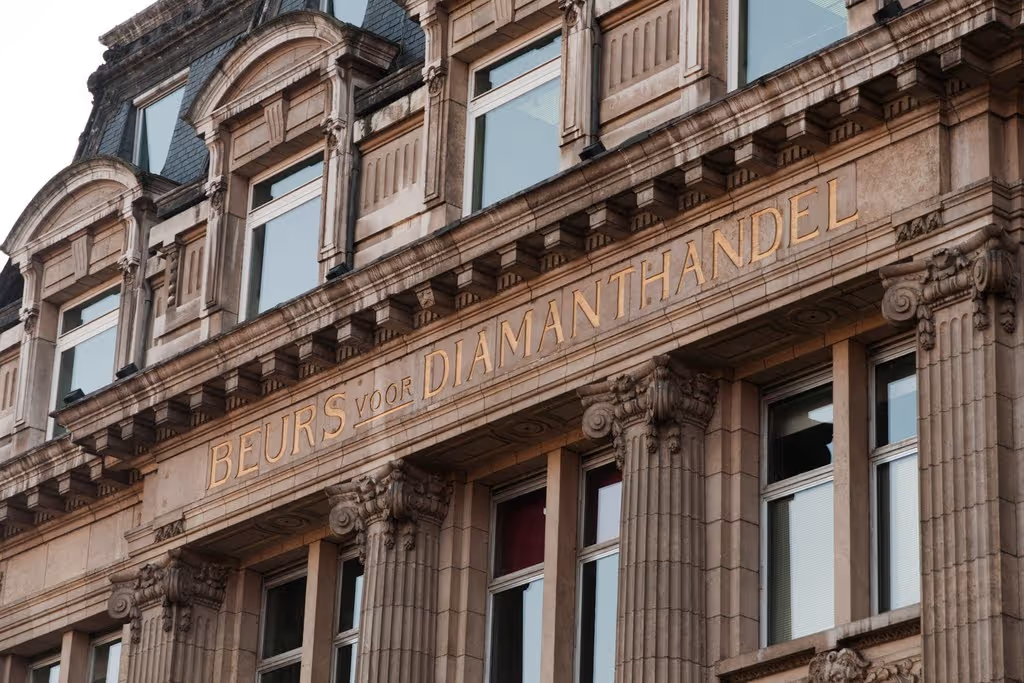Antwerp: The brilliant hub of the diamond trade

Diamonds are magical, precious and undoubtedly the most famous gemstones in the world. The diamond district in Antwerp, which is just 1 km² in size, is the heart of the international diamond trade. In the Belgian port city, around 84% of all rough diamonds and 50% of all cut diamonds worldwide are negotiated. According to the Antwerp World Diamond Center (AWDC) industry association, diamonds worth around 35 million carats were bought and sold there in 2020. But why did Antwerp develop into such a “top-class” world trade center in the first place? And what is the significance of the diamond metropolis today?
Antwerp's rise to diamond city
Some traditions say that Europeans must have known diamonds as early as the 6th century BC, as the eyes of a bronze statue from ancient Greece consisted of two rough diamonds. Diamonds later came from Asia to Europe on the Silk Road and became a sought-after luxury item. The origins of diamond cutting and polishing on our continent can be traced back to 14th century Venice. The art of diamond cutting later spread to Paris, Bruges, Nuremberg and Antwerp. With the arrival of refugee Jews in the Middle Ages, the Belgian city's rise to a diamond trading center began. Because refugees were prohibited from doing manual work back then, they switched to trading — for example with diamonds. Where the raw stones were sold, tailors and grinders followed suit at some point. Antwerp also benefited from its strategic location in central Europe and the large inland port.
As early as the 16th century, Antwerp was the largest and most renowned diamond center in the world. At the end of the 1970s, the diamond trade there experienced a peak phase. However, as millions of dollars worth of gemstones were bought and sold every day, trade had to be institutionalized and regulated. In contrast to street or private sales, specialized exchanges offered more discretion, security and a more formal character. As a result, auction houses, diamond exchanges, customs and certification bodies emerged. The precious goods are now being transported from Brussels airport directly to the diamond district. Here it passes for inspection and customs clearance Diamond Office.
Antwerp Diamond Exchange: A top-class trading center
Since then, the diamond district at Antwerp Central Station and the adjacent Houveniersstraat have been the heart of trade. Around 1,600 companies are based at this address and in the surrounding area — including diamond cutters, cutters, conditioners, retailers, wholesalers, jewelry designers and jewelers. The entire sector employs around 30,000 people directly and indirectly in Antwerp. The Diamond Quarter is also home to a total of four diamond exchanges: the Beurs voor Diamanthandel, the Antwerp Diamond Ring, the Diamond Club van Antwerp and the Vrije Diamanthandel.
Even the three largest diamond appraisal organizations (GIA, IGI and HRD) each have an office in Antwerp. The institutes certify diamonds neutrally, professionally and objectively — making diamonds comparable. Each stone is traded in accordance with the certificate and no longer needs to be scrutinized in advance by interested buyers. The certification has made global trade in diamonds possible via the Internet and specialized, digital platforms in the first place.
Diamonds as “everlasting” asset protection
Especially in times of economic uncertainty, diamonds are very popular not only among enthusiasts but also among investors. This is because the “hardest currency” of all offers high inflation protection, is very stable in value even in times of recession and has hardly any correlation with other asset classes. As a result, diamonds are very suitable as part of strategic asset allocation.
For laymen, however, the diamond trade presents numerous challenges. For example, buying diamonds on a stock exchange can be a smart move, as it avoids intermediaries and avoids unnecessary price surcharges. But on the one hand, access to the diamond exchanges in Antwerp is only allowed to members. On the other hand, a high level of expertise is required to be able to assess the quality and value of a diamond.
Shiny tangible assets: Tokenized diamonds
In order to avoid costly bad investments, it is therefore advisable to professional platforms to invest in diamonds that have the appropriate network and the necessary expertise. For example, diamond experts are recruited as partners who will accompany the entire process from selection to testing.
Thanks to cooperation with international partner networks, diamonds can be purchased and stored outside German borders. This can result in lucrative domestic sales tax savings of 19% and all import duties. In addition, the sale of a diamond is a private sale transaction within the meaning of Section 23 EStG, which is why the sale is tax-free from a minimum holding period of one year.



